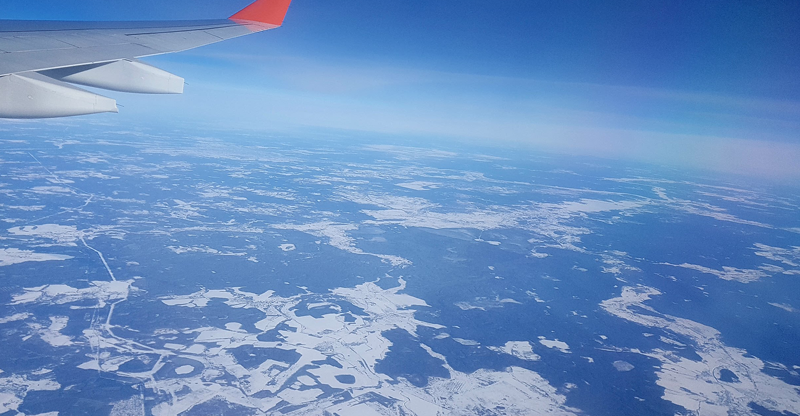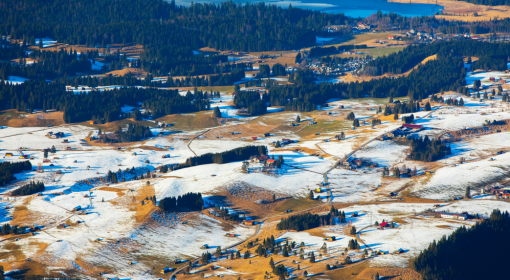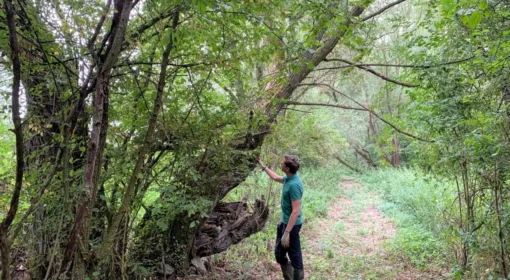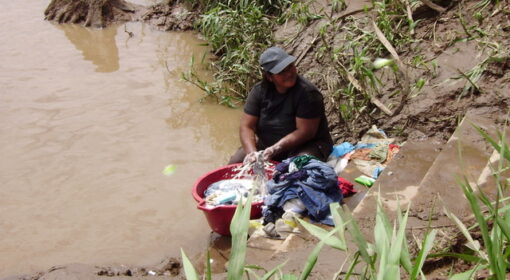The winter riddle
Frank van Steenbergen | March 8, 2019

Here is the winter riddle. If one flies over a Northern winter landscape then there are large patches of snow covering town, villages, farmlands and water bodies whereas where there is forest there is hardly any. A pattern hidden in de warm days of the year is now revealed – white and dark green, open land and forest.
So here is the riddle, or in fact two. So why are the forests not covered in white? And as snow falls in cold weather on the forest where does it disappear?
The first answer is in the micro-climate. Forests insulate – they buffer against the cold. They retain a layer of static air between trees that separates the naked earth from the unforgiving brutal winter atmosphere at high latitude . So the cold does not get to touch the ground. And then trees are dark and green – they keep absorbing the warmth from the sun . Even though the sky is cold the pine needles and the leaves keep attracting the little heat there is. This is called the albedo effect – the capacity of dark surfaces to absorb heat.
And this leads to the second part of the riddle – where does the snow go that lands on the forests? It slowly turns into water – even when the temperature of the air is freezing, the touch of the warm tree makes the snow melt and drip into the soil underneath, building up soil moisture gradually, keeping the micro-organisms tick though slowly but not causing the brutal freezing of the soil as in the farm lands.
What does the winter patchwork teach us? That there is more to climate than the global forces – what matters with climate is much what happens on the ground. If we remove vegetation then the patchwork changes and the cold spots increase.
So it is the micro-climate that matters and our interaction with what is immediately near. It is not the climate with the Capital C that determines what happens to us, our land, water and forest, but our own action on the ground and how we take care of what is around us.




